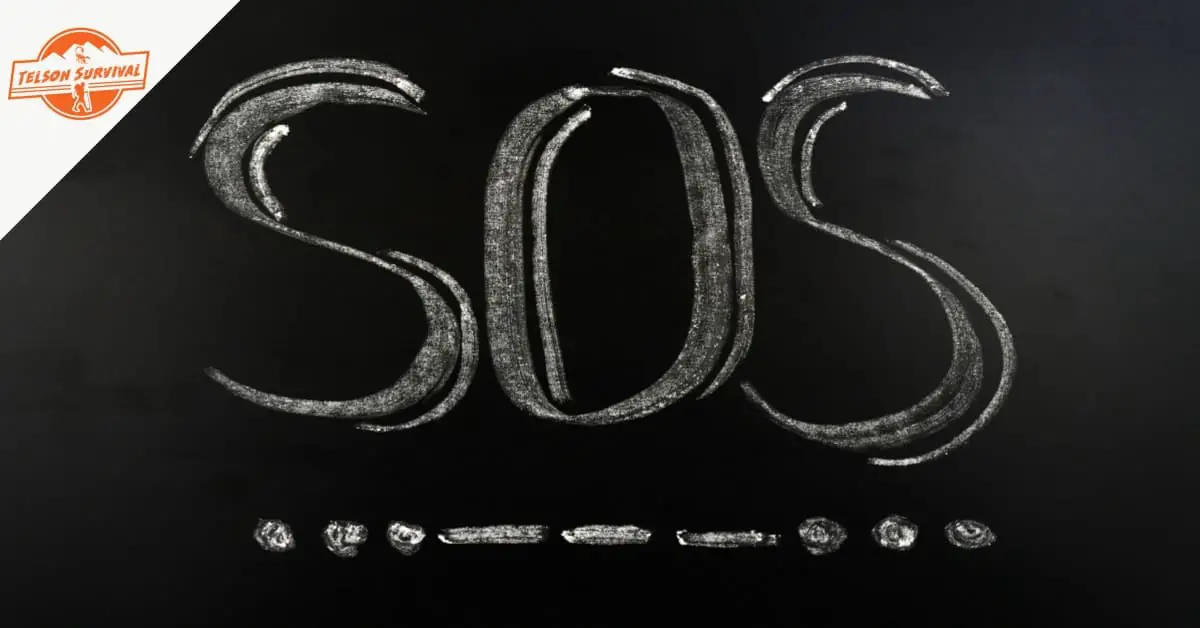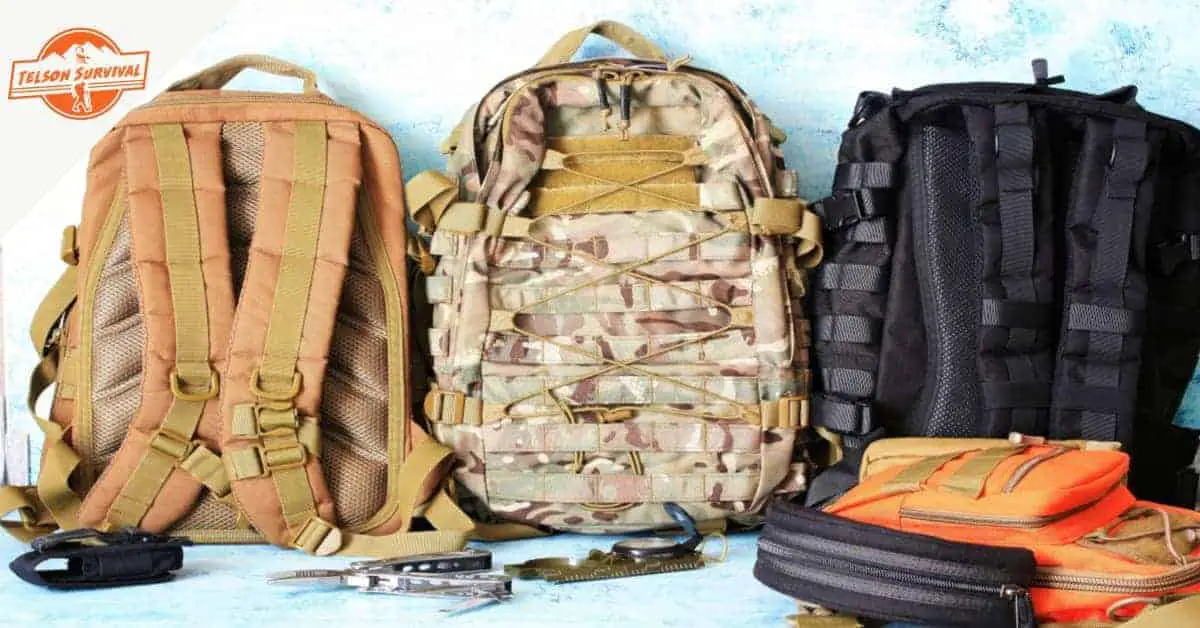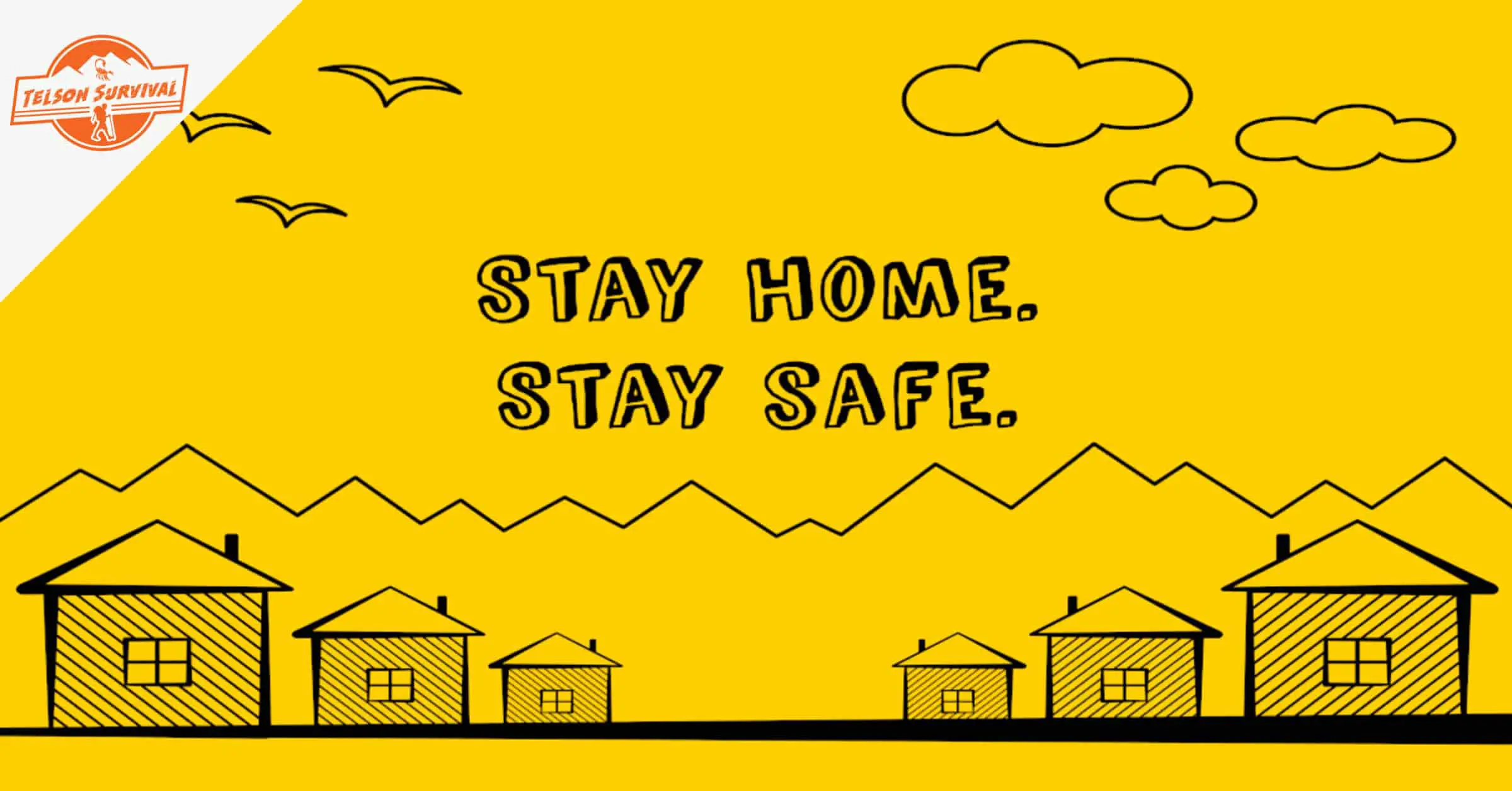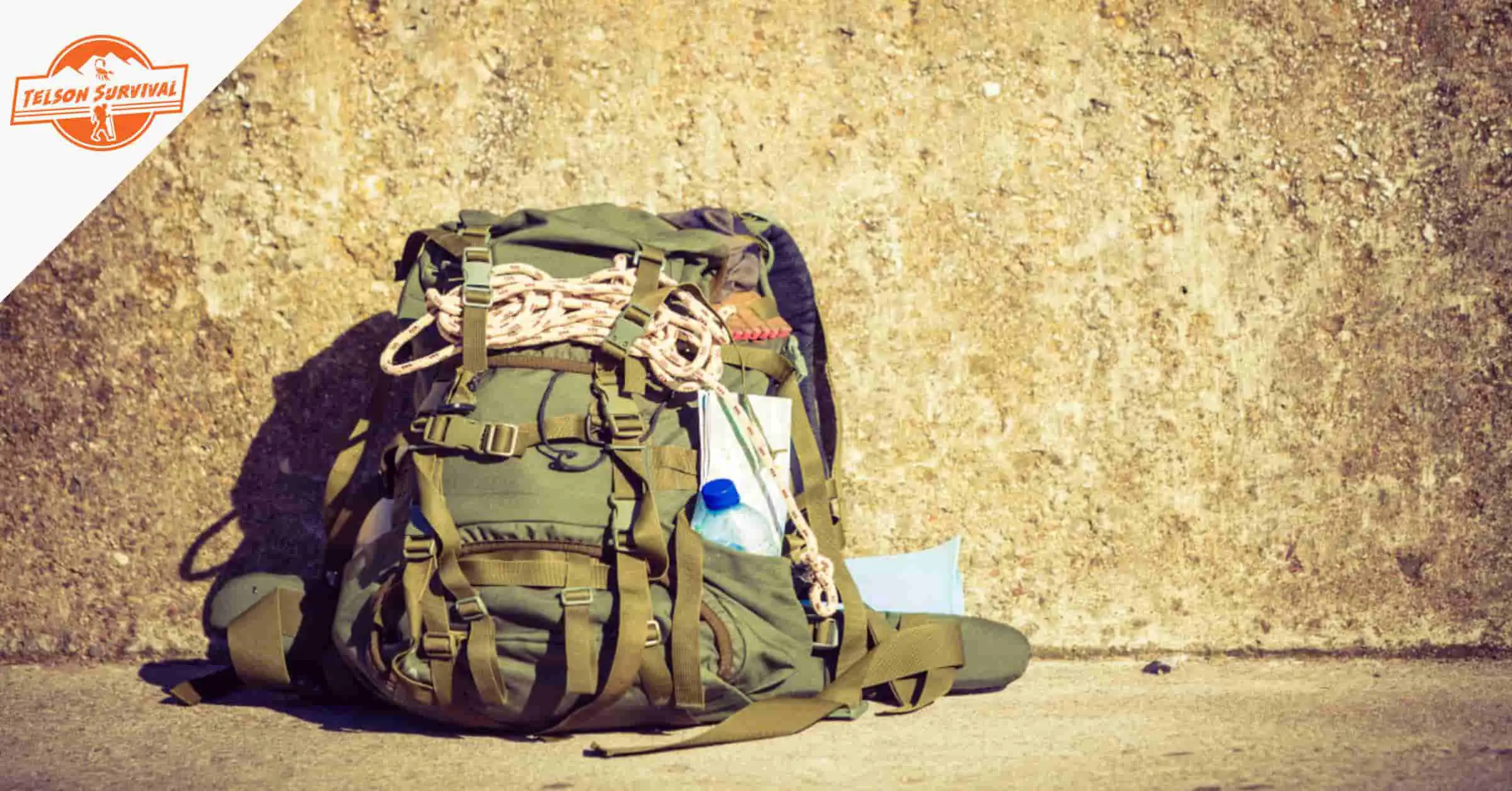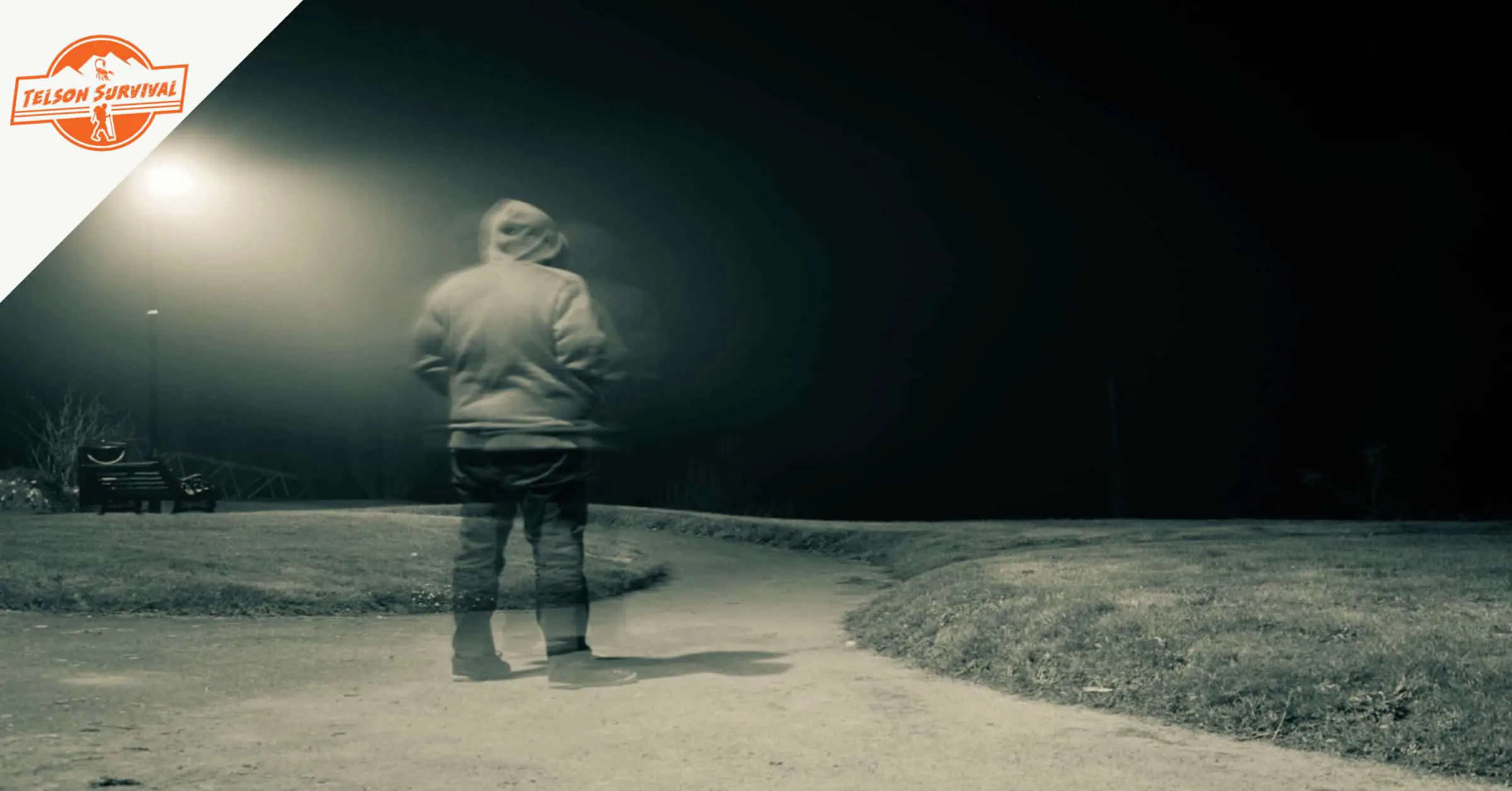While most preppers and survivalist focus on how survive on their own or maybe with family, there comes a time when you might need to call for help. Therefore, it is crucial that you know how to signal an SOS when the situation calls for it.
Dangerous situations in the wilderness are infinite. You would never know what may threaten your life. It could be wild animals, a hostile community, smugglers, or terrible weather. In this article, we will explore 12 different ways you can signal an SOS.
In case you are wondering, SOS is a universal code used to signal distress, predominantly used by ships at sea. With time, however, it has been accepted as a universal plea for help in virtually any situation.
The SOS code is particularly essential in a survival situation because of the many dangers that lurk in the wilderness. The trickiest part of this signal is that the potential rescuer also has to understand the SOS code, or it won't work.
The signal, which was invented by the Germans in the nineteenth century, applies the morse code in its workings.
SOS and Morse Code
It is natural to assume that ‘SOS’ is an abbreviation of a technical term used by the military and similar organizations. Well, guess what? It is not. Even though it is often linked to phrases such as 'save our ship' and 'save our souls,' SOS is a morse code.
A Morse code is a telecommunication method that is made up of standardized sequences of two different durations of signals known as dits and dahs.
In the SOS signal, the ‘S’ stands for three fast flashes (dits) and the ‘O’ for three longer flashes (dahs). Thus, SOS as a signal is three dits, three dahs, and three dits in that order.
12 Ways of Signaling an SOS
As a prepper, creativity and preparedness are two of the most vital qualities you should possess. More often than not, your survival will be dependent on them.
If you regularly go to the wilderness, you know that it is inevitable to find yourself in risky situations. Some of these risky situations might require you to get rescued.
So, what do you do when there is no cellular network in your area, or your cell phone's battery is dead? What happens when you cannot find the nearest town or a highway?
I’ll tell you what- use SOS signals. That is why it is essential for every survivalist to know how to signal an SOS. The following are the different ways you can signal an SOS.
SOS using a mirror
If don’t know how to signal an SOS using a mirror, do not fret. As long as you understand how the SOS morse code works, it is simple enough.
Essentially, this method works when there is a bright light that can reflect on a mirror, the most reliable being the sunlight. Aim the mirror towards potential rescuers like choppers, a ship, or a vehicle.
Reflect light three short times, then three long times, and three short times again. If the potential rescuers understand the SOS code, they will know that you are calling for help.
Thousands of people have been saved using the mirror SOS code. This method works best during the day when the sun is out.
Last update on 2025-01-15 / Affiliate Links / Images from Amazon Product Advertising API
SOS using your hands
It may happen that your vehicle breaks down in a relatively remote place, when you do not have tools with you that can signal an SOS. In this case, parts of your body should come in very handy.
If you spot a vehicle from afar, wave your hands sideways to attract attention towards yourself. When the vehicle gets closer, put your hands in the air to signal that you need rescuing.
This method works best when you are in a clearing and, thus, visible to the potential rescuer.
SOS using your eyes
The good thing about SOS is that you do not always need devices to send a signal of distress. You can use your body parts as well, especially in a hostage situation where you need to be discreet. The most effective way to send a low-key SOS code for help is by using the eyes.
First, you have to ensure that the target can see you. Next, send the signal. This is how you send an SOS signal using eyes: three short blinks (for S), followed by three long blinks (for O), and another three short blinks (for S).
Many hostages have been rescued with the help of this tactic. During the Vietnam war, for instance, a prisoner called Jeremiah Denton Jr. used his eyes to signal an SOS without alerting his captors and was rescued.
SOS using a whistle
A whistle is a dependable signal device as you can use it day or night and in any weather condition. All that you will need is breath to blow it and the will to survive a situation. Also, it attracts attention fast enough.
Still, if you blow it randomly, it may not send the right message to a potential rescuer. One of the most efficient ways to signal for help using a whistle is using the SOS method.
Here is how to signal an SOS using a whistle: make three loud, fast whistles, followed by three whistles approximately six seconds long, then three short ones. This is what it would look like in a written form: beep.beep.beep…beep_ beep_ beep…beep.beep.beep.
This is per the SOS Morse code that is universally recognized as a call for help. Keep repeating the SOS signal for as long as it takes for you to find help.
No products found.
SOS using a flashlight
You are not a real survivalist if you do not own a good, dependable flashlight. As a prepper or a bush craftsman, you will need your way lit when it gets dark in the wilderness.
The interesting bit is that a flashlight is not good for just lighting your way; it comes in very handy in life and death scenarios. A flashlight is a perfect device for sending an SOS signal when you need to be rescued.
To signal an SOS using a flashlight, point it towards your target and flash it thrice in quick succession, followed by three longer flashes and three more quick flashes. The target will understand this Morse code and come to your rescue.
Some flashlights come with the SOS function already installed. All you need to do is press the emergency button, and it does the work for you.
If for some reason, you do not have a flashlight, you could use the light on your mobile phone. Naturally, a flashlight signal would work best during the night.
Last update on 2025-01-15 / Affiliate Links / Images from Amazon Product Advertising API
SOS using rocks and sand
At a point or other during your adventures, you may land at a beach somewhere. Common with most adventures, you may find yourself in some trouble. Worry not, for you can find help by signaling an SOS using sand.
Scrape the letters ‘SOS’ in a large, visible font. A minimum depth of 4 inches and a width of 2 inches will prevent the sand from filling itself back in.
This method works best during low tide because it takes long before the signal gets washed away by rising water. In the absence of sand, rocks work just fine.
There are two ways to signal an SOS using rocks: make three X marks in a triangular shape or use the rocks to form the letters ‘SOS’.
SOS using fire
As a prepper or a bushcrafter, it is highly probable that many nights will find you deep into the wilderness. What do you do when you are in trouble, say, one of the campers is injured and in need of urgent medical care?
You can use fire to signal an SOS. In case you are wondering how you can send an SOS using fire, we got you covered.
Use your survival skills to light three fires in a straight line or a triangular shape. The fires should be about 100 meters from each other. Three fires signify distress.
SOS using smoke
During the day, it is difficult to use fire to signal for help, but you can use fire to create smoke that will signal that you need help.
The smoke has to be thick and visible; thus, it would help if you added green leaves and wood to create more smoke. Also, choose a location that will make the smoke visible from a distance, preferably somewhere raised.
Many ships use orange smoke to signal SOS when the ship is in trouble. The orange smoke is produced by burning a special fuel that you can make on your own or buy in stores.
Orange smoke is recognized as an SOS signal and is preferred because it is visible at any time of day or night and in different weather conditions.
SOS using a flag
As a survivalist, you should always be prepared for any possible outcome. Thus, it is practical to pack a signaling flag or a brightly colored piece of cloth in case things go South.
Putting up a brightly colored flag in the wild or a remote area is recognized as an SOS signal.
For the signal to be effective, you want to use a color that is starkly contrasting your surroundings to increase the chances of being noticed.
Last update on 2025-01-15 / Affiliate Links / Images from Amazon Product Advertising API
SOS using a flare gun
A flare gun is one of the most reliable distress signals. The loud bangs will quickly capture the attention of aircraft and search parties on the ground. Still, these bangs could easily be mistaken for hunting sessions or shooting lessons in the wild.
To ensure that your potential rescuers understand that you need help, using the SOS code while firing your rounds is an effective distress signal.
Care should be taken when firing flares because they can easily start a wildfire, as a flare could still be blazing when it hits the ground. This method is, therefore, best suited for wet areas.
Last update on 2025-01-15 / Affiliate Links / Images from Amazon Product Advertising API
SOS using a handheld flare
A flare produces adequate light to be noticed from quite a distance. It is most effective the further away it is from the ground.
Thus, it is recommended that you use a duck-tape to stick the flare to the tip of a tall pole and wave it around for potential rescuers to take notice.
A flare is recognized as a distress signal, and if you keep at it long enough, you will most likely get help.
Last update on 2025-01-15 / Affiliate Links / Images from Amazon Product Advertising API
SOS using an iPhone
One of the essential things to bring to your expedition as an outdoorsman is your phone. Being in touch with other people can save your life.
An iPhone is especially well suited for emergency situations as it is installed with SOS software that will enable you to call for help fast enough.
Once you make an SOS call, your iPhone automatically alerts the local emergency number. If you have emergency contacts, which is vital if you are out in the wild, your iPhone will send an SOS message with your current location.
In case you move, it will keep updating your new location to the recipients of your SOS. Every version of the iPhone has specific steps through which you can make an SOS call.
For instance, if you have an iPhone 8, you should press and hold the side button simultaneously as one of the volume buttons until an SOS emergency slider pops up on your screen.
Obviously this method of signaling an SOS is highly dependent on your location, signal strength and battery level.
When Should you Signal an SOS?
Like we have already determined, the world is full of potentially life-threatening situations. Of these, there are those that you can deal with on your own, depending on your survival experience and the type of tools you have.
For instance, with a quality survival hatchet or machete, you could easily scare away bears. With a first aid kit and basic first aid skills, you would be all right if someone in your crew gets minor injuries.
However, there are instances when you absolutely need to call for help. They include:
When you are lost
The wilderness is known to be vast. Therefore, it is very likely that you may lose your bearing at one point or another. If it happens that you cannot trace your way back, it follows that you should send an SOS signal for help.
Serious Injuries
As a survivalist, you have encountered dangerous situations umpteen times. In unfortunate cases, you or someone from your crew may get seriously injured such that basic first aid cannot suffice. In such a case, you should send an SOS signal to get rescued as soon as possible.
Hostage situations
There are cases where you may encounter hostile communities or a militia group that will take you hostage. Cases like these frequently happen in the wilderness and remote places.
When abducted, your belongings will be confiscated. In this case, your best chance of getting help is by sending SOS signals using body parts, like your eyes, for instance.
When stuck in a remote place
You may be out on a hike, a road trip, or in the middle of the ocean deep in an adventure. Then, due to bad weather or mechanical problems, your vessel stops working.
If this happens in a remote place where there is zero cellular network or human settlements, the only viable option is to send an SOS signal.
If it is at night, you could use fire, a flashlight, or your phone's light. During the day, you could use rocks, the smoke signal, a whistle, or a survival mirror to send an SOS signal.
To minimize the chances of getting caught up in life-threatening situations, it is advisable to be well-prepared before embarking on an adventure.
SOS Signaling FAQs
What does SOS stand for?
SOS does come off as an abbreviation, but it is not. Despite being associated with phrases like ‘save our ship’ and ‘save our souls,' it is a representation of the morse code for help.
This code is made up of sequences of two signals with different durations that are called dits and dahs. Dits are short, whereas dahs are relatively longer.
Thus, an SOS is characterized by three dits (S) followed by three dahs(O) followed by three dits(S).
What is the universal signal for SOS?
The universal signal for SOS is three quick flashes followed by three longer flashes, followed by three brief flashes.
What is the most effective method of signaling for an SOS?
This depends on the situation, time, and location. For instance, it would be useless to use a flashlight signal during the day. In this case, a smoke signal or a whistle blast would be more effective.
In the same way, it would be risky to signal an SOS using a whistle if you are in a hostage situation, as it would alert your captors. In such a position, using your eyes to send an SOS signal would be best.
SOS Signals Conclusions
Survivalist conditions require you to know how to signal an SOS because of the many dangers of the great outdoors. We hope that you are better informed about how the SOS code works.
Remember that the more signals you can send, the higher your chances of getting rescued!
For even more ways of communicating in survival situations, check out our comprehensive guide on the best off grid communication methods.

